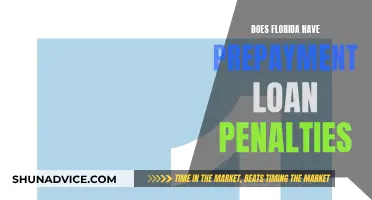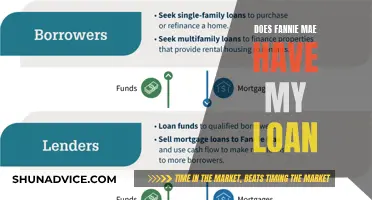
The Free Application for Federal Student Aid (FAFSA) is a crucial step in applying for financial aid for college. It is used to determine eligibility for federal grants, student loans, work-study programs, scholarships, and other aid programs. While FAFSA funds do not technically run out, there are annual limits on how much an individual can borrow or qualify for in Pell Grant funding, and certain forms of aid can be depleted if students apply late. Therefore, it is highly recommended to submit FAFSA applications as early as possible to increase the chances of securing the desired form of financial aid and to allow time for processing.
| Characteristics | Values |
|---|---|
| Does FAFSA run out of loans? | Technically, no. However, there are annual limits on how much an individual can borrow or qualify for in Pell Grant funding. |
| FAFSA application process | The FAFSA is typically available from October 1 to June 30. |
| FAFSA and federal student aid | FAFSA is the trigger application for federal financial aid programs and many state and institutional aid programs. |
| FAFSA and private student loans | The FAFSA isn't a requirement to apply for private student loans. |
| Benefits of applying early for FAFSA | Applying early for FAFSA increases the amount of potential aid you'll get. You'll also get your Student Aid Report sooner, making it easier to plan out how you'll finance your education. |
What You'll Learn
- FAFSA funds don't run out, but there are annual limits on how much you can borrow
- Applying early for FAFSA is advisable as grants and scholarships tend to go first
- FAFSA is not a requirement for private student loans
- If you've hit federal student loan limits, your financial aid office may recommend alternative options
- FAFSA is the trigger application for federal financial aid programs and many state and institutional aid programs

FAFSA funds don't run out, but there are annual limits on how much you can borrow
The amount of aid you qualify for is determined by the information you provide on the FAFSA, including your enrollment year, dependency status, and loan type. Colleges have a limited pool of money, so it is generally recommended to submit your FAFSA application as early as possible. Submitting your application early increases the amount of potential aid you'll get and allows you to receive your Student Aid Report sooner, making it easier to plan how you'll finance your education. Additionally, submitting early gives you more time to correct any mistakes on your application, ensuring that you don't lose out on aid.
If you haven't hit federal student loan limits, you should be able to get one mid-semester as long as you filled out the FAFSA before the semester started. If you've already reached those limits, your financial aid office may recommend alternative options like private student loans or a Direct PLUS Loan. Your school might also be able to extend an emergency loan to help cover expenses, although the amount you can borrow is usually small, and there are typically criteria you'll need to meet.
While FAFSA funds don't run out, it's important to be aware of your state's final deadline for FAFSA submission to ensure you don't miss out on other potential aid.
Explore Loan Recast Options: Not All Lenders Are Equal
You may want to see also

Applying early for FAFSA is advisable as grants and scholarships tend to go first
The FAFSA (Free Application for Federal Student Aid) is a crucial step in applying for federal financial aid. It is available from October 1 to June 30, but it is advisable to apply as early as possible. While FAFSA funds do not technically "run out", there are annual limits on how much an individual can borrow or qualify for in Pell Grant funding. Federal loan limits are based on factors such as enrollment year, dependency status, and type of loan.
Colleges have a limited pool of money for financial aid, so applying early for FAFSA is highly recommended. The more desirable forms of aid, such as grants and scholarships, tend to be awarded first. If you apply too late, you may miss out on these opportunities and be forced to rely on loans or seek external aid. By submitting your FAFSA application early, you increase your chances of securing the most desirable forms of financial aid, which can lead to less debt in the long run.
Additionally, submitting your FAFSA application early allows for more time to process your application. The efficiency of colleges in processing this information can vary, and there is always the possibility of systemic errors. By applying early, you can avoid being in a position where you are compelled to take on emergency private student loans due to delays in processing your federal student loans.
Another benefit of applying early for FAFSA is that you will receive your Student Aid Report sooner. This report helps you plan how you will finance your education and allows you to make any necessary corrections to your application. It is also important to be aware of your state's final deadline for FAFSA submission to ensure you don't miss out on potential aid.
In summary, applying early for FAFSA is advisable as it increases your chances of securing the most desirable forms of financial aid, such as grants and scholarships. It also allows for more time to process your application and receive your Student Aid Report. By applying early, you can maximize your potential aid and ensure that you don't miss out on any opportunities.
Understanding Excess Distribution: Loan Basis Included?
You may want to see also

FAFSA is not a requirement for private student loans
Filling out the Free Application for Federal Student Aid (FAFSA) is the first step in applying for federal financial aid. The FAFSA is typically available from October 1 to June 30, and it is recommended that you apply as early as possible. The FAFSA is a requirement for federal student loans, and grants you access to various federal loan types, each tailored to meet different needs and financial situations.
However, the FAFSA is not a requirement for private student loans. Private student loans are offered by banks and financial institutions, not the government, and have their own criteria for approval. This is primarily based on creditworthiness rather than financial need. Private lenders often have a minimum credit score requirement to qualify, so you may need a cosigner to get approved for funding.
Private loans may offer higher borrowing amounts, depending on the lender's policies and your credit score. They also often offer quick approval and access to funds if you have strong credit. However, it is important to note that private loans can have higher interest rates than federal loans, especially for borrowers with poor or fair credit. Many private loans also lack income-driven repayment plans and loan forgiveness programs.
Before applying for private student loans, it is recommended that you consider all financial aid alternatives, including grants, scholarships, and federal loans. Private student loans should only be considered to fill in any gaps after maxing out your federal loans and aid.
Loans and Financial Intermediaries: An Inevitable Partnership?
You may want to see also

If you've hit federal student loan limits, your financial aid office may recommend alternative options
FAFSA funds do not "run out" in the sense that there is no finite pool of money that gets depleted by early applicants. However, there are annual limits on how much an individual can borrow or qualify for in Pell Grant funding. These federal loan limits are based on your enrollment year, dependency status, and type of loan.
- Private student loans: Private student loans are offered by private lenders, and they often have higher fees or interest rates compared to federal loans. It is important to understand the differences between federal and private loans before borrowing from a private lender. Private loans usually require a cosigner and may have more stringent credit score requirements.
- Direct PLUS Loans: PLUS Loans are available for parents of dependent students or for graduate and professional students. These loans can help cover the gap between the cost of attendance and the amount provided by other financial aid.
- Emergency loans: Your school might be able to extend an emergency loan to help you cover expenses, including school costs, medical expenses, or other unexpected costs. The amount you can borrow is usually small, and there may be criteria you need to meet, such as being enrolled at least half-time and providing proof of financial hardship.
- Payment plans: Instead of taking out additional loans, you can consider a payment plan offered by your school's billing office. This option allows you to spread the remaining costs over several payments throughout a semester, helping you budget and avoid late fees.
- Scholarships: Applying for scholarships, especially local scholarships, can increase your chances of receiving additional financial aid. Be cautious of potential student aid scams and always consult your school's financial aid office if you have concerns.
- Work-study programs: Completing the FAFSA can make you eligible for work-study programs, although it doesn't guarantee placement. Applying early increases your chances of securing a suitable position.
Experian Loans: What You Need to Know
You may want to see also

FAFSA is the trigger application for federal financial aid programs and many state and institutional aid programs
The Free Application for Federal Student Aid (FAFSA) is the first step in applying for federal financial aid. It is used to determine eligibility for grants, scholarships, work-study programs, and loans for college or career school. FAFSA is the "trigger application" for federal financial aid programs and many state and institutional aid programs.
FAFSA is essential to accessing federal grants, student loans, and work-study programs. It is typically available from October 1 to June 30, and while there is no finite pool of funds, there are annual limits on how much an individual can borrow or qualify for in Pell Grant funding. Federal loan limits are based on enrollment year, dependency status, and loan type. Colleges have limited funds to allocate, so it is advisable to apply early.
Many states use the FAFSA for their financial aid programs, and colleges also use the information to award their own financial aid packages. FAFSA is a requirement for federal student loans but not for private student loans. If you have already hit federal student loan limits, your financial aid office may recommend alternative options like private student loans or a Direct PLUS Loan.
The FAFSA is typically available to complete from October 1 to June 30, and it is free to submit. The application can be completed online, and you will need to create a Federal Student Aid (FSA) ID to sign and submit the form.
Factoring: Understanding Loan Factor and Its Impact
You may want to see also
Frequently asked questions
FAFSA does not run out of loans, but there are annual limits on how much an individual can borrow or qualify for in Pell Grant funding. The amount you can borrow is based on your enrollment year, dependency status, and type of loan.
Applying early for FAFSA is advisable as it increases the amount of potential aid you can get. You will also get your Student Aid Report sooner, making it easier to plan out how you will finance your education.
If you haven't hit federal student loan limits, you should be able to get one mid-semester. If you have, your financial aid office may recommend alternative options like private student loans or a Direct PLUS Loan. Your school might also be able to extend an emergency loan to help cover expenses.







